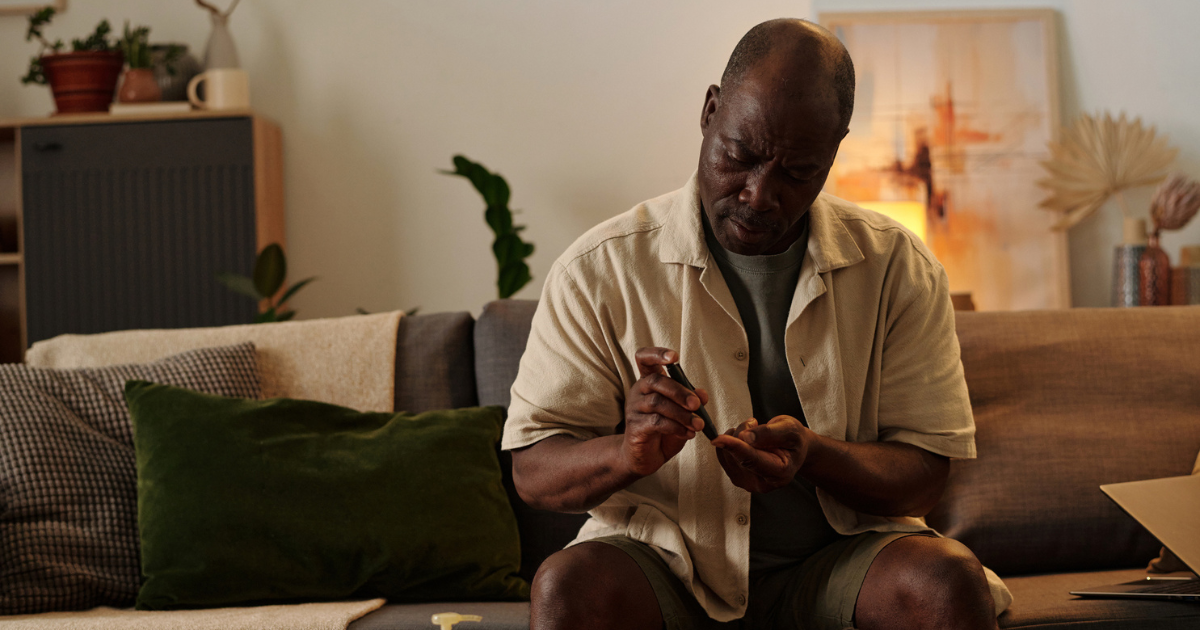What's the difference between hyperglycemia and hypoglycemia?

The difference between hyper and hypoglycemia is rather simple:
- Hyperglycemia means high blood sugar.
- Hypoglycemia means low blood sugar.
Still, while the definitions are easy to understand, recognizing and treating them can be more complicated.
Both hyperglycemia and hypoglycemia are frequently linked to diabetes but can occur in patients without diabetes, too. “While many people understand the need to treat hyperglycemia, I think they often don’t understand you need to be careful not to overtreat it and enter hypoglycemia,” says endocrinologist Shubham Agarwal, MBBS.
Because glucose is fuel for the body, it’s important to maintain a normal glucose range. It provides energy to different organs, including vital ones like the brain and heart. “If these organs don’t have enough glucose, they won’t function properly,” says Dr. Agarwal.
Optimal blood glucose range
Blood glucose levels will change depending on the time of day and whether you’ve eaten recently. “A healthy blood glucose range is anywhere between 70 to 180,” says Dr. Agarwal. Depending on the aforementioned factors, an occasional 200 is fine, but anything below 70 or above 200 is concerning.
Hypoglycemia
Hypoglycemia is dangerous because it can come on fast, depending on the cause. Our body is designed so people who don’t have diabetes typically don’t experience hypoglycemia and can regulate glucose within a healthy range. “If somebody without diabetes is having hypoglycemia, they should see an endocrinologist to determine why it is happening,” says Dr. Agarwal.
For people with diabetes, the bigger concern is if you’re on medications that are lowering your blood glucose more than what’s necessary. In such cases, your physician should adjust your medications accordingly. “Depending on the severity and cause, hypoglycemia can be pretty severe,” says Dr. Agarwal.
Symptoms of hypoglycemia
The symptoms of hypoglycemia are the first indicator for you to check your blood glucose. Symptoms can include:
Sweatiness.
Dizziness.
Light-headedness.
Brain fog.
Palpitations.
Shakiness.
Passing out.
“In the most serious cases, someone with hypoglycemia will need the help of a bystander or family member to help correct the issue,” says Dr. Agarwal. “But if you recognize these symptoms earlier, while you still have cognitive intuition about what’s happening, you can correct it yourself.”
He recommends checking your blood glucose as soon as you feel any symptoms. While glucose sensors are helpful, you should confirm with a fingerstick test.
Treating hypoglycemia
If you’ve confirmed you’re experiencing hypoglycemia, you should correct it right away using the rule of 15.
- Consume 15 grams of fast-acting carbs (juice, soda, candy or glucose tablets).
- Wait 15 minutes.
- Recheck your blood glucose again.
If, after rechecking your blood glucose in 15 minutes, it’s still low, you should repeat the process. But if it remains low, call 911 or go to the emergency room. For those who live by themselves and are at risk of losing consciousness because of hypoglycemia, there are medications for emergencies. These medications are injectors – resembling an EpiPen – and consist of glucagon, a hormone that will raise your blood sugar instantly. “I always tell patients to carry their glucagon injector everywhere,” says Dr. Agarwal.
Additionally, those at high risk for hypoglycemia, especially those with type 1 diabetes, should wear a medical alert bracelet. “If you’re unconscious but have one of these bracelets, the first thing an EMS will do is check your blood glucose to ensure you’re in hypoglycemia or not,” says Dr. Agarwal. “They can then administer a treatment that will instantly improve your condition.”
The dangers of repeated hypoglycemia
If someone has repeated hypoglycemia, their body may stop showing warning signs. Due to repeated exposure to a hypoglycemic episode, these symptoms might not appear because the body feels this state is the new normal.
“The symptoms of hypoglycemia then tend to occur at a much lower number, which is dangerous,” says Dr. Agarwal. “Understanding and treating hypoglycemic episodes in high-risk patients as early as possible is key.”
Hyperglycemia
People with diabetes typically have a high blood glucose at baseline, which is hyperglycemia. Unlike hypoglycemia, most people with hyperglycemia won’t have an immediate problem, as the complications usually creep in over time. Still, there are two medical emergencies related to hyperglycemia:
- Diabetic ketoacidosis (DKA)
This happens when blood sugar is high and the body enters an acid state. It is a medical emergency.
Symptoms of DKA:
Nausea.
Vomiting.
Abdominal pain.
Fever.
Rapid or shallow breathing.
- Hyperosmolar hyperglycemic state (HHS)
This condition is similar to DKA, but the body doesn’t go into an acidotic state. It causes extreme dehydration because the high blood sugar pulls water from different cells in the body, which is then urinated out.
“In extreme cases, of both DKA and HHS, people can pass out or fall into a coma,” says Dr. Agarwal.
Identifying hyperglycemia early is necessary. Often, these medical emergencies can help patients realize they have diabetes before they’ve been diagnosed with it. Still, it’s best to avoid such emergencies if possible.
Finally, hyperglycemia is something every pregnant woman should be screened for during their second trimester to detect if they have diabetes during pregnancy. Early detection helps keep both mother and baby healthy.
Detection and recognition are key
It is vital to detect and recognize both hyperglycemia and hypoglycemia as early as possible. This detection is especially crucial for hypoglycemia, as there is less awareness of it, and its negative effects can be fast-acting.
“I think there is low awareness about hypoglycemia, and most people with diabetes don’t realize there’s a zone below the normal,” says Dr. Agarwal. “Avoiding this zone is imperative because it can be super dangerous.”







